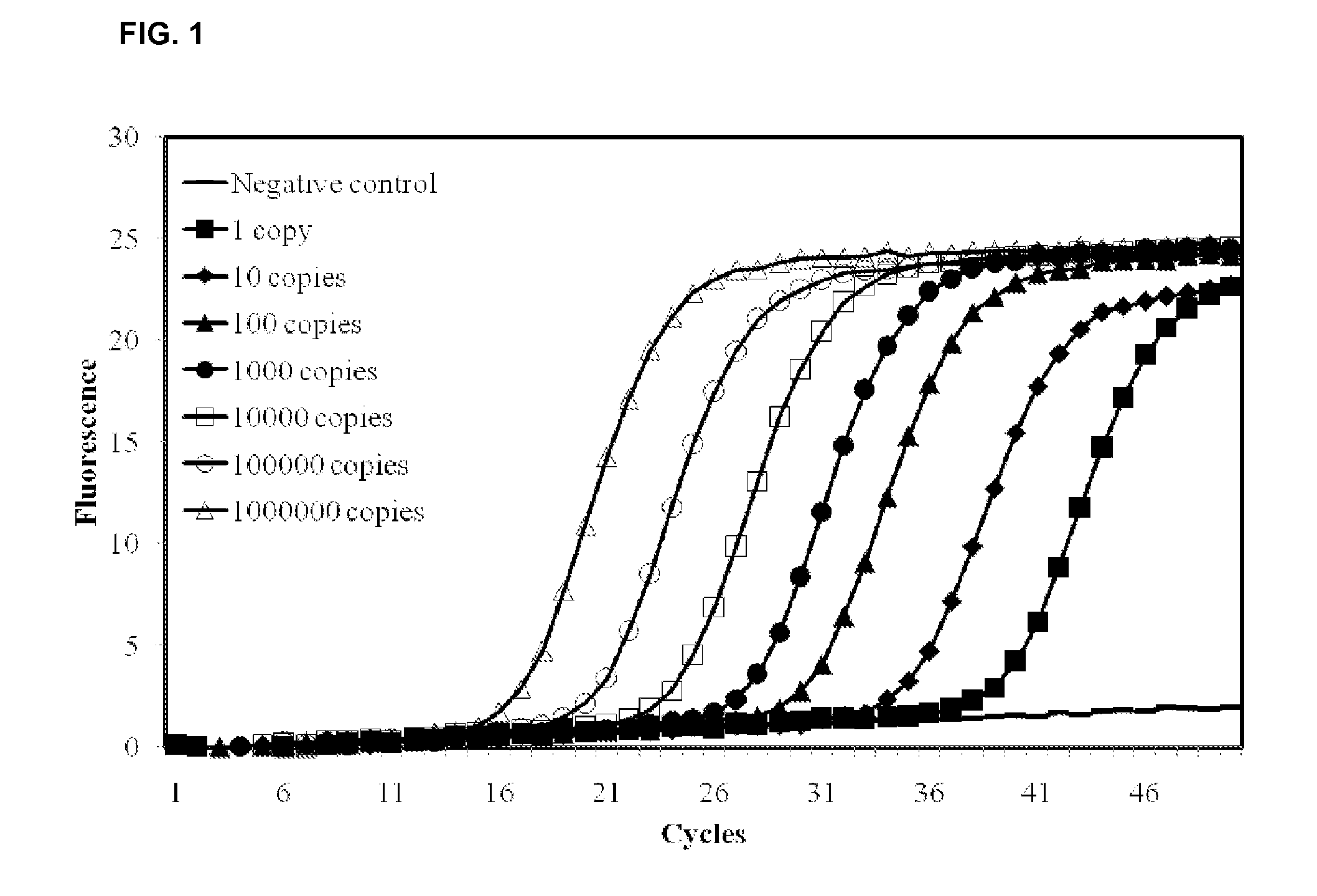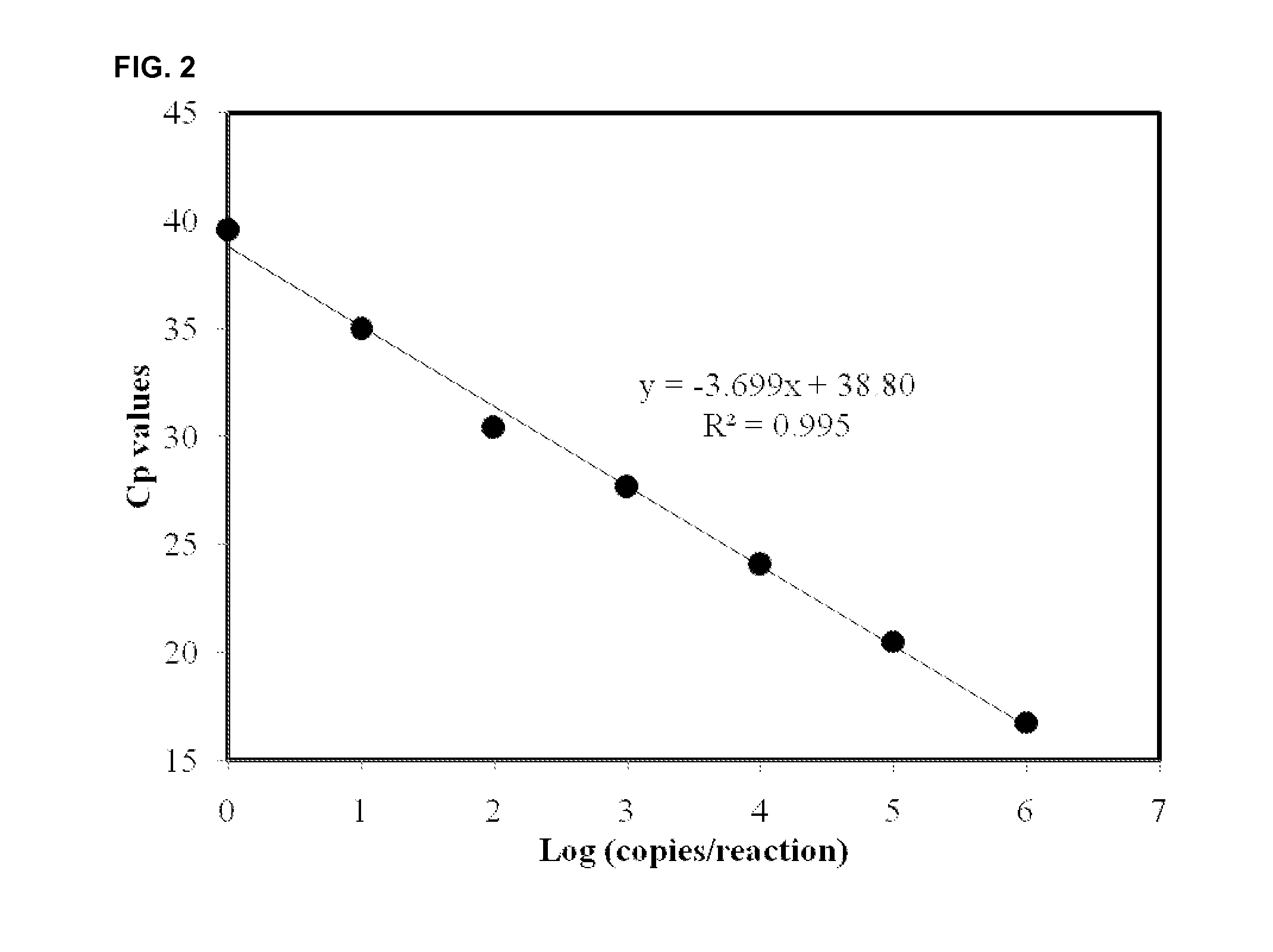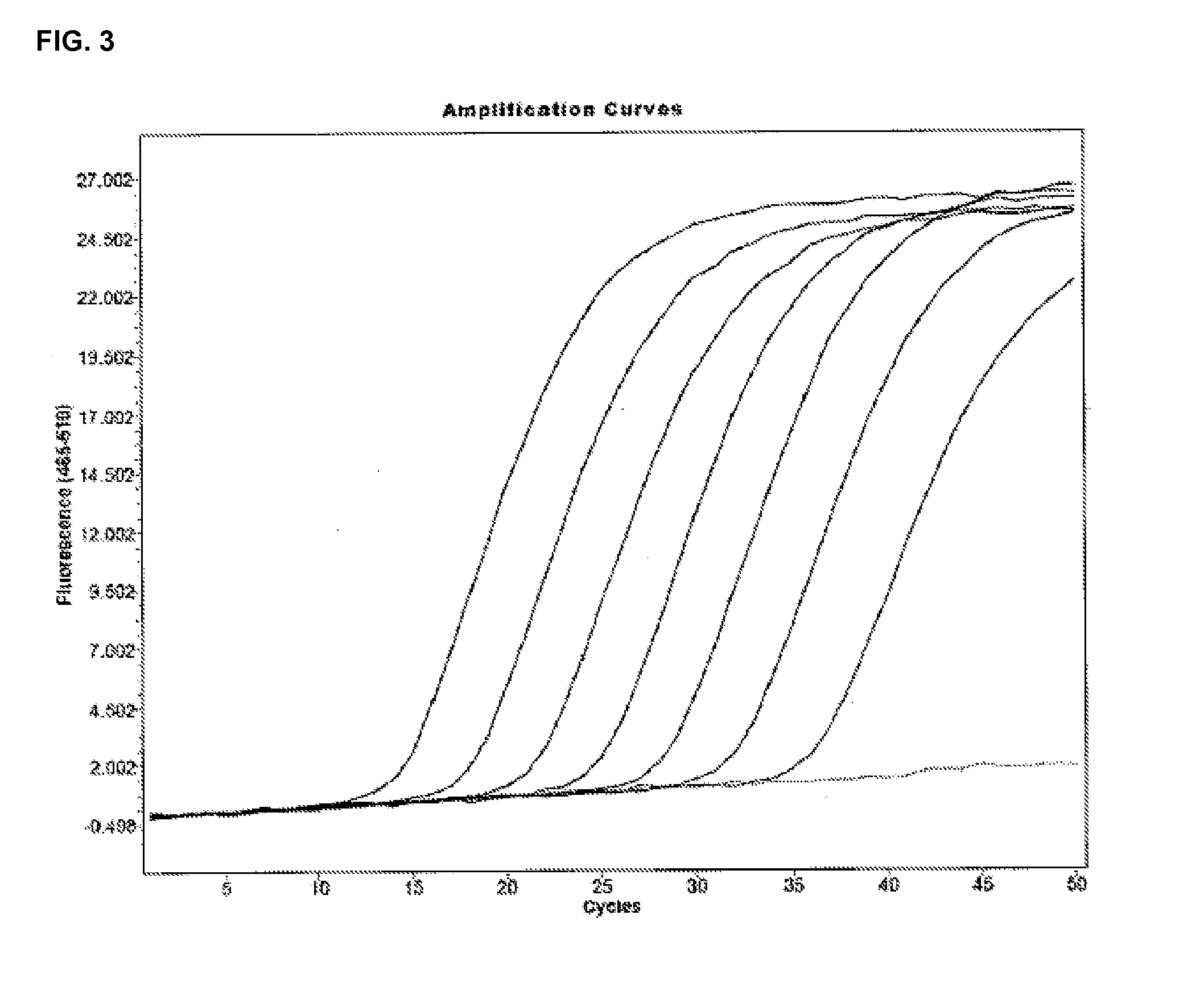Oligonucleotides for detecting listeria spp. and use thereof
a technology of listeria and oligonucleotides, which is applied in the field of oligonucleotides for detecting listeria spp., can solve the problems of listeria /i>infection and consumption of contaminated foods, and achieve the effect of rapid, sensitive and accurate detection of listeria spp
- Summary
- Abstract
- Description
- Claims
- Application Information
AI Technical Summary
Benefits of technology
Problems solved by technology
Method used
Image
Examples
example 1
Real-Time PCR Amplification of Listeria spp. Using Primer Pair of SEQ ID NOs. 3 and 7 and Probe of SEQ ID NO. 12
[0099]A primer pair of SEQ ID NOs. 3 and 7 and a probe of SEQ ID NO. 12 were used to amplify and detect a target nucleic acid of Listeria spp. in a sample according to real-time PCR amplification.
[0100](1) Standard Curve and Detection Limit
[0101]The correlation of real-time PCR amplification of Listeria spp. using the primer pair of SEQ ID NOs. 3 and 7 and the probe of SEQ ID NO. 12 with the concentration of Listeria spp. was identified.
[0102]Serial 10-fold dilutions, from 104 to 1010 folds, 1013 copies / ml of a plasmid including the 23S rDNA of Listeria monocytogenes with a buffer were used as templates in PCR. PCR was performed in the presence of RNase H to induce cleavage of the probe during the PCR. The resulting probe fragments were measured in real time.
[0103]The PCR mixture composition and the PCR conditions are as follows.
TABLE 1Reaction mixture composition:Compone...
example 2
Specific Detection of Listeria spp. in Contaminated Sample
[0120]A sample contaminated with Listeria spp. was subjected to real-time PCR to amplify and a target nucleic acid of Listeria spp. in the presence of a primer pair of SEQ ID NOs. 3 and 7 and a probe of SEQ ID NO. 12 to detect Listeria spp. in the sample.
[0121](1) Specific Detection of Listeria spp. in Contaminated Liquid Egg and Whole Milk
[0122]Liquid egg was inoculated with L. innocua to concentrations of about 1 cfu / 25 ml and about 4 cfu / 25 ml, respectively. After incubation of the samples at 4° C. for 24 hours, each sample was cultivated in an enriched medium A2.2 (propriety formulation containing 30 g / L of TSB, 6 g / L of yeast extract, 1 g / L of esculin, 10 g / L of LiCl, 2 g / L of sodium pyruvate, 0.1 g / L of ferric ammonium citrate, 8 g / L of MOPS free acid, 14.2 g / L of MOPS, sodium, 5 g / L of beef extract, and 1% of a vitamin mix containing about 0.1 mg / L of riboflavin, about 1.0 mg / L of thiamine and about 1.0 mg / L of biotin,...
example 3
Specific Detection of Listeria spp. in Contaminated Samples by RT-PCR
[0154](1) Ceramic Tile Surface Contaminated with L. monocytogene
[0155]L. monocytogene was diluted with 0.5% non-fat milk to a concentration of 16 cfu / 100 μL. 80 μL of the suspension was inoculated on a 10×1 inch2 ceramic tile surface and air-dried overnight at room temperature. The contaminant on the sample surface was collected with a PBS or DE-soaked sponge and then cultivated in 8 mL of a pre-warmed brain-heart infusion (BHI) medium at 35° C. for 6 hours. Then, 1 mL of the culture products was inoculated into 9 ml of a UVM-1 medium and further incubated at 30° C. for 18 hours. Separately, 1 ml of the culture products was inoculated onto 9 ml of BHI medium at 35° C. for 6 hours.
[0156]The culture products from the 6-hour cultivation in the BHI medium was used for reverse transcriptase (RT) reaction (700 μL of enriched culture products+100 μL of 1×ZAC (1% CHAPS, 2.5 mg / mL sodium azide, and 100 mM Tris (pH 8))+10 μ...
PUM
| Property | Measurement | Unit |
|---|---|---|
| temperature | aaaaa | aaaaa |
| temperatures | aaaaa | aaaaa |
| temperature | aaaaa | aaaaa |
Abstract
Description
Claims
Application Information
 Login to View More
Login to View More - R&D
- Intellectual Property
- Life Sciences
- Materials
- Tech Scout
- Unparalleled Data Quality
- Higher Quality Content
- 60% Fewer Hallucinations
Browse by: Latest US Patents, China's latest patents, Technical Efficacy Thesaurus, Application Domain, Technology Topic, Popular Technical Reports.
© 2025 PatSnap. All rights reserved.Legal|Privacy policy|Modern Slavery Act Transparency Statement|Sitemap|About US| Contact US: help@patsnap.com



